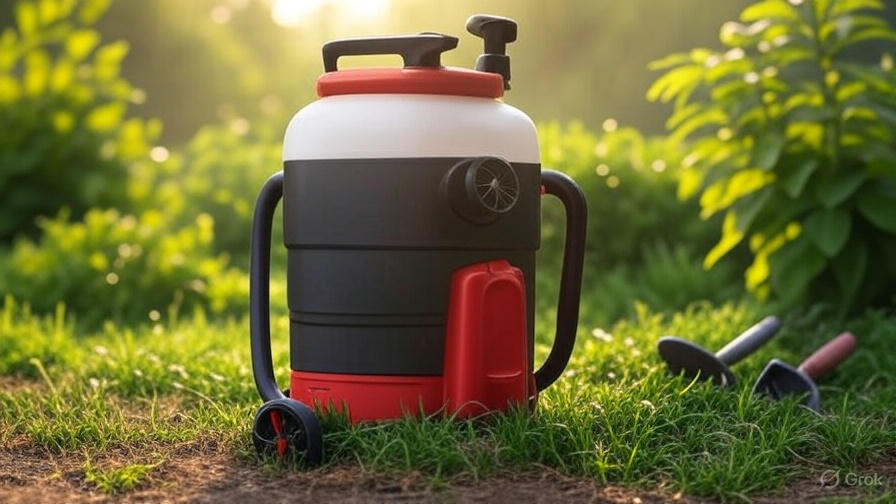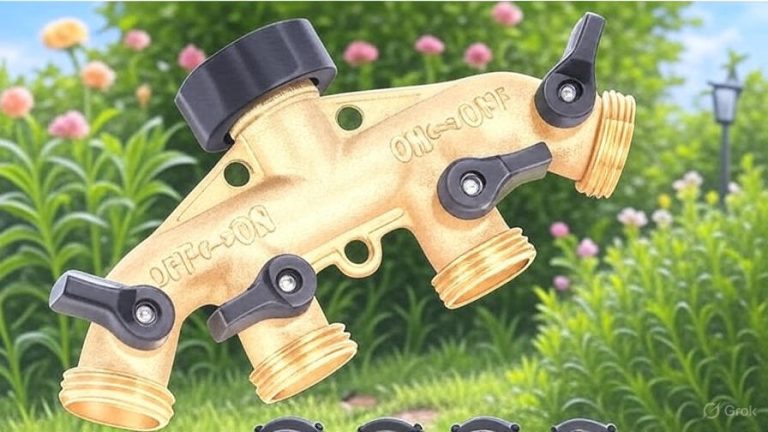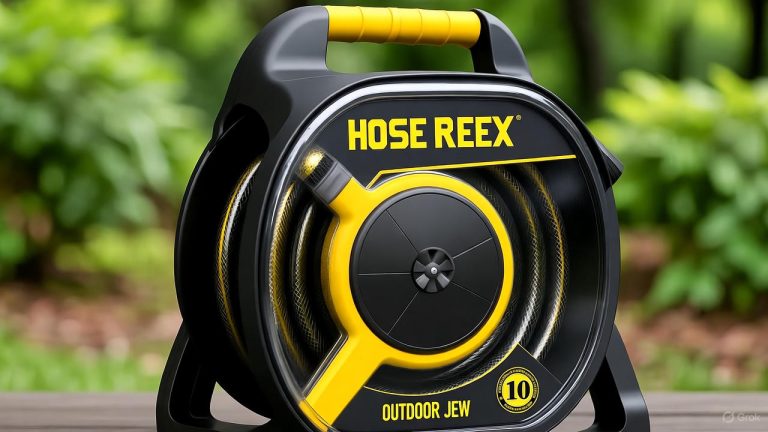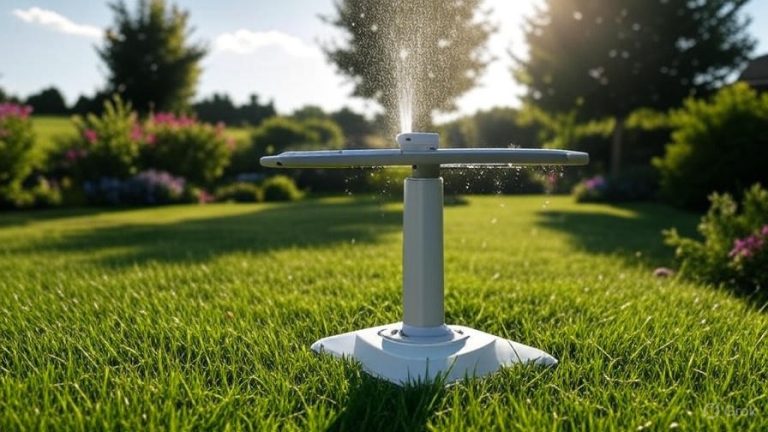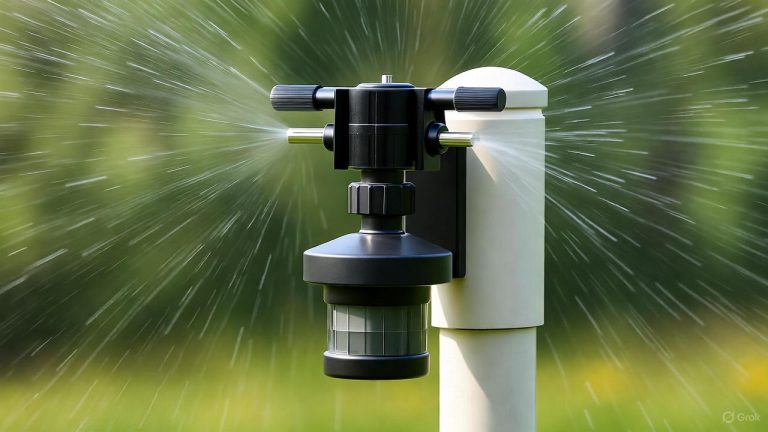5 Best 4 Gallon Backpack Sprayers In 2025
Backpack sprayers have become essential tools for homeowners, gardeners, and professional landscapers who need efficient liquid application across various surfaces. A 4-gallon capacity strikes the perfect balance between coverage area and manageable weight, making these units ideal for most residential and commercial applications.
The right backpack sprayer can transform tedious manual work into efficient, professional-grade treatment sessions. From pest control to fertilizer application, these versatile tools deliver consistent results while reducing physical strain on operators.
This comprehensive review examines five top-rated 4-gallon backpack sprayers, analyzing their performance, features, and value proposition. Each model brings unique advantages to different user scenarios, helping you make an informed decision based on your specific needs.
How 4 Gallon Backpack Sprayers Work
Modern backpack sprayers operate through pressurized systems that create consistent flow rates for uniform liquid distribution. The 4-gallon tank capacity provides substantial coverage without excessive weight burden on the operator’s back and shoulders.
Most units feature either manual pump mechanisms or battery-powered systems. Manual pumps require periodic pressurization through hand pumping, while electric models maintain constant pressure automatically. Both systems deliver reliable performance when properly maintained.
The spray wand connects to the tank through reinforced hoses, allowing operators to reach various heights and angles. Adjustable nozzles control spray patterns from fine mist to concentrated streams, accommodating different application requirements.
Internal filtration systems prevent clogs and ensure smooth operation throughout extended use sessions. Quality filters capture debris before it reaches spray components, maintaining consistent performance and extending equipment lifespan.
Key Features to Consider
Tank Construction and Design
High-density polyethylene tanks resist chemical corrosion and impact damage better than traditional materials. Translucent tanks allow visual monitoring of liquid levels, preventing dry operation that could damage pump components. Ergonomic shapes distribute weight evenly across the operator’s back.
Pump Systems and Pressure Output
Manual piston pumps provide reliable service with minimal maintenance requirements. Internal pump designs protect components from external damage while delivering consistent pressure. Battery-powered pumps offer convenience but require charge management and replacement considerations.
Pressure ratings between 90-150 PSI accommodate most residential and light commercial applications. Higher pressure enables better penetration through dense foliage and extends spray distance for hard-to-reach areas.
Comfort and Ergonomics
Padded shoulder straps reduce pressure points during extended use sessions. Adjustable straps accommodate different body types and clothing layers. Quality padding maintains shape and cushioning properties even after repeated compression cycles.
Back panel design affects weight distribution and ventilation. Contoured panels follow natural spine curves, reducing fatigue and improving stability during movement. Ventilation channels prevent moisture buildup between the tank and operator’s back.
Spray Components and Versatility
Multiple nozzle options expand application versatility. Cone nozzles create wide coverage patterns for large areas. Stream nozzles provide concentrated application for precise targeting. Fan nozzles deliver medium-width patterns suitable for most general applications.
Telescopic wands extend reach without ladders or awkward positioning. Adjustable length accommodates different heights and application angles. Quality wands resist bending and maintain straight spray patterns under normal use conditions.
Filtration and Maintenance
Multi-stage filtration systems protect spray components from debris and sediment. Coarse filters capture large particles at the tank inlet. Fine filters prevent microscopic debris from reaching nozzles and creating uneven spray patterns.
Easy-access filter locations simplify cleaning and replacement procedures. Quality filters withstand chemical exposure and repeated cleaning cycles. Proper filtration extends pump life and maintains spray quality.
Top 5 Best 4 Gallon Backpack Sprayers Reviews
1. FIELD KING 190328 Backpack Sprayer – Best Overall Performance
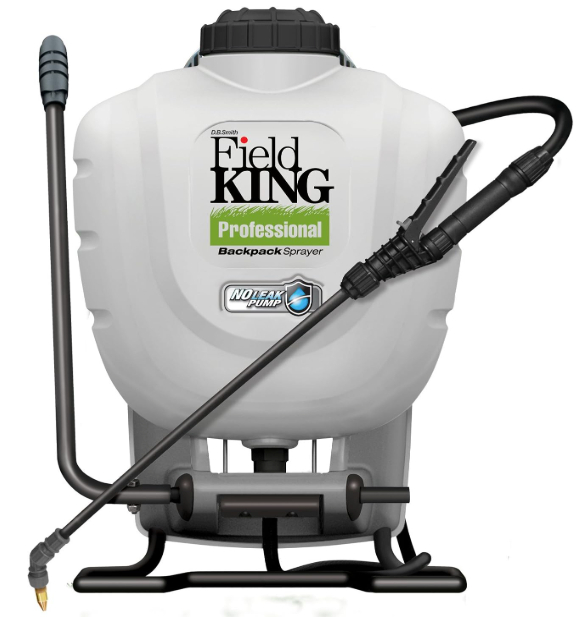
The FIELD KING 190328 represents the gold standard in manual backpack sprayers, delivering professional-grade performance through innovative internal pump design. This unit generates impressive 150 PSI maximum pressure, outperforming most competitors in its class.
Design and Construction Excellence
The no-leak internal pump design eliminates common failure points found in external pump systems. This engineering approach protects pump components from environmental damage while ensuring consistent operation throughout the unit’s lifespan. The robust construction withstands daily professional use without compromising performance.
Heavy-duty polyethylene tank construction resists chemical corrosion and impact damage. The translucent design allows operators to monitor liquid levels easily, preventing accidental dry operation that could damage pump components. Molded tank features include measurement markers for accurate mixing ratios.
Pump Performance and Pressure
The internal piston pump delivers exceptional pressure output with minimal pumping effort. Operators achieve maximum working pressure with fewer pump strokes compared to traditional external pump designs. The system maintains pressure longer between pumping cycles, reducing operator fatigue during extended applications.
Pressure regulation ensures consistent spray patterns regardless of tank liquid level. The system automatically adjusts internal pressure to maintain optimal spray characteristics from full tank to empty. This feature prevents over-application at high tank levels and under-application as tanks empty.
Comfort Features
Ergonomic shoulder straps distribute weight evenly across the operator’s shoulders and back. High-density padding maintains shape and cushioning properties even after extended compression. Adjustable strap lengths accommodate different body types and seasonal clothing variations.
The contoured back panel follows natural spine curves, improving stability and reducing pressure points. Ventilation channels prevent moisture buildup between the tank and operator’s back during hot weather operations. The balanced design minimizes shifting during movement across uneven terrain.
Spray System Components
The included spray wand provides excellent reach and control for most applications. Durable construction resists bending and maintains straight spray alignment under normal operating conditions. The comfortable grip reduces hand fatigue during extended use sessions.
Multiple spray patterns accommodate various application requirements. The adjustable nozzle transitions smoothly between spray patterns without requiring tool changes. Quality brass components resist corrosion and maintain precise spray characteristics throughout the unit’s service life.
Pros:
- Exceptional 150 PSI pressure output
- Leak-proof internal pump design
- Durable polyethylene tank construction
- Ergonomic comfort features
- Professional-grade spray components
Cons:
- Manual pumping required
- Higher price point than basic models
- Heavier than battery-powered alternatives
The FIELD KING 190328 excels in professional applications where reliability and performance matter most. The internal pump design justifies the premium price through reduced maintenance and extended service life.
2. VAXMAY Battery Powered Backpack Sprayer – Best Battery Performance
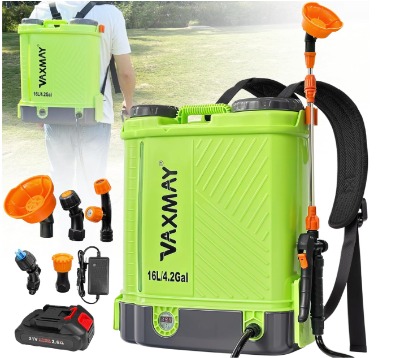
The VAXMAY battery-powered sprayer revolutionizes backpack sprayer operation through reliable electric pump technology. Compatible with popular Makita 18V battery systems, this unit appeals to users who already own compatible tools and batteries.
Battery System Integration
Makita 18V lithium-ion battery compatibility provides excellent runtime and charging convenience. Users with existing Makita tool collections benefit from battery interchangeability across multiple devices. The included 2.6 Ah battery delivers substantial operating time for most residential applications.
The battery mount securely holds batteries during operation while allowing quick changes when needed. Protection circuits prevent over-discharge damage to expensive lithium-ion batteries. LED indicators display remaining battery charge levels for operation planning.
Electric Pump Performance
The 100 PSI electric pump delivers consistent pressure without manual pumping effort. Operators maintain focus on application technique rather than pressure maintenance through pumping cycles. The electric system provides steady pressure output regardless of operator strength or fatigue levels.
Pressure regulation maintains optimal spray characteristics throughout battery discharge cycles. The pump automatically adjusts output to compensate for voltage drops as batteries discharge. This feature ensures consistent application results from full charge to low battery warnings.
Tank and Construction Quality
High-density polyethylene tank construction matches professional-grade standards found in premium manual units. Chemical resistance properties accommodate common herbicides, pesticides, and fertilizer solutions. The 4-gallon capacity provides substantial coverage area between refills.
Translucent tank walls allow easy liquid level monitoring during operation. Graduated markings assist with accurate mixing ratios for concentrated solutions. Wide-mouth opening simplifies filling procedures and cleaning access.
Comfort and Ergonomics
Well-designed shoulder straps feature quality padding that maintains shape under load. Adjustable strap lengths accommodate different operators and seasonal clothing variations. The strap attachment points distribute weight evenly across the tank structure.
Contoured back panel design follows natural body curves for improved stability and comfort. Ventilation features prevent excessive moisture buildup during extended use sessions. The balanced weight distribution reduces shifting during movement across varied terrain.
Spray System Versatility
The telescopic wand extends reach for overhead applications without requiring ladders. Adjustable length settings accommodate different operator heights and application scenarios. Quality construction maintains alignment and prevents unwanted bending during normal use.
Five included nozzle options provide excellent application versatility. Different spray patterns accommodate various liquid types and coverage requirements. Quick-change nozzle system allows pattern changes without tools or complex procedures.
Pros:
- Makita 18V battery compatibility
- Consistent electric pump pressure
- Telescopic wand for extended reach
- Five nozzle options included
- No manual pumping required
Cons:
- Battery runtime limitations
- Higher operating costs (battery replacement)
- Dependence on battery availability
The VAXMAY sprayer appeals to users who prioritize convenience and already own compatible Makita batteries. The electric pump eliminates manual pumping while delivering professional application results.
3. PetraTools HD4000 Electric Backpack Sprayer – Best Battery Life

The PetraTools HD4000 electric backpack sprayer emphasizes extended battery operation through efficient motor design and high-capacity power systems. The advertised 6-hour battery life addresses the primary limitation of most battery-powered sprayers.
Extended Battery Performance
The high-capacity battery system delivers exceptional runtime compared to standard lithium-ion alternatives. Six-hour operation capability covers most residential and light commercial applications without interruption. Extended runtime reduces project delays and improves overall productivity.
Efficient motor design maximizes battery utilization while maintaining consistent pump performance. Power management systems optimize energy consumption based on actual spray demands. The battery gauge provides accurate remaining runtime estimates for operation planning.
Pump System and Pressure Control
The 90 PSI maximum pressure accommodates most residential and light commercial applications. Adjustable pressure control allows operators to optimize spray characteristics for different liquids and application requirements. Lower pressure settings extend battery life for extended operations.
Consistent pressure output throughout battery discharge cycles ensures uniform application results. The pump maintains pressure regulation even as battery voltage decreases during extended use. This feature prevents application inconsistencies that could affect treatment effectiveness.
Comfort Engineering
Premium padded shoulder straps provide superior comfort during extended use sessions. High-quality padding materials maintain cushioning properties even after repeated compression cycles. Ergonomic strap design distributes weight evenly without creating pressure points.
The contoured back panel design accommodates different body types while maintaining stability during movement. Ventilation channels prevent moisture buildup and improve operator comfort during warm weather operations. Balanced weight distribution reduces fatigue during long application sessions.
Tank Design and Construction
Durable polyethylene tank construction resists chemical exposure and impact damage. The 4-gallon capacity balances coverage area with manageable weight when full. Translucent tank walls allow easy liquid level monitoring during operation.
Wide opening design simplifies filling procedures and provides access for thorough cleaning. Graduated markings assist with accurate mixing ratios for concentrated solutions. Quality tank construction ensures leak-free operation throughout the unit’s service life.
Spray System Components
Six included spray nozzles provide comprehensive application versatility. Different nozzle types accommodate various spray patterns and liquid characteristics. Quick-change nozzle system allows pattern adjustments without tools or complex procedures.
Quality spray wand construction resists bending and maintains accurate spray alignment. Comfortable grip design reduces hand fatigue during extended use sessions. Durable materials withstand regular use without degrading spray quality.
Pros:
- Exceptional 6-hour battery life
- Adjustable pressure control (90 PSI)
- Premium comfort features
- Six spray nozzles included
- Efficient power management
Cons:
- Lower maximum pressure than some competitors
- Battery replacement costs
- Heavier than manual alternatives
The PetraTools HD4000 excels in applications requiring extended operation time without battery changes. The 6-hour runtime capability makes this unit ideal for large property treatments and commercial applications.
4. Chapin 60114 Made in USA Sprayer – Best Filtration System
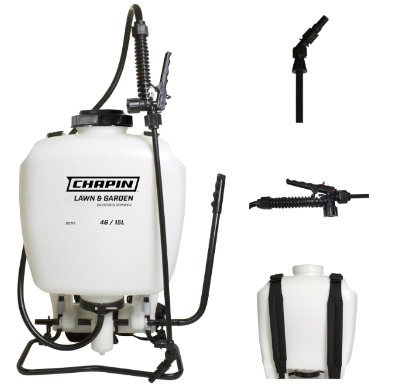
The Chapin 60114 backpack sprayer emphasizes superior filtration through innovative 3-stage filtration design. Made in USA construction ensures quality control and supports domestic manufacturing while delivering reliable performance.
Advanced 3-Stage Filtration
The unique 3-stage filtration system provides superior protection against clogs and spray quality issues. Primary filtration captures large debris at the tank inlet level. Secondary filtration removes medium particles before they reach pump components. Final filtration ensures only clean liquid reaches spray nozzles.
Multiple filtration stages extend pump life and maintain consistent spray patterns throughout extended use. Clean liquid delivery prevents nozzle clogs that interrupt application sessions. The filtration system accommodates various liquid types without compromising performance.
Made in USA Quality
Domestic manufacturing ensures consistent quality control throughout production processes. American-made construction supports local employment while maintaining high manufacturing standards. Quality materials and assembly techniques contribute to extended service life.
The manufacturing location provides better customer service access and warranty support. Replacement parts availability benefits from domestic supply chains. Quality control standards exceed those typically found in overseas manufacturing facilities.
Pump Design and Performance
Traditional manual pump design delivers reliable pressure generation through proven piston technology. Simple mechanical operation reduces potential failure points compared to complex electric systems. Manual pumping provides unlimited operation time without battery constraints.
Durable pump construction withstands daily professional use without requiring frequent maintenance. Quality seals and components maintain pressure integrity throughout extended service life. Simple design allows field repairs when necessary.
Tank Construction Excellence
Translucent white polyethylene tank construction allows easy liquid level monitoring. Chemical-resistant materials accommodate common agricultural and landscaping solutions. The 4-gallon capacity provides substantial coverage between refills.
Wide-mouth opening design simplifies filling and cleaning procedures. Graduated markings assist with accurate mixing ratios for concentrated solutions. Quality construction ensures leak-free operation under normal use conditions.
Comfort and Usability
Well-designed shoulder strap system distributes weight evenly across the operator’s shoulders. Adjustable straps accommodate different body types and clothing variations. Quality padding maintains comfort during extended application sessions.
Ergonomic design considerations reduce operator fatigue during long work sessions. Balanced weight distribution improves stability during movement across uneven terrain. Comfortable operation encourages proper application techniques.
Spray System Performance
Quality spray wand provides excellent control and reach for most applications. Durable construction maintains straight alignment under normal operating conditions. Comfortable grip design reduces hand fatigue during extended use.
Adjustable spray nozzle accommodates various application requirements. Quality brass components resist corrosion and maintain spray accuracy throughout service life. Simple operation allows quick pattern adjustments without tools.
Pros:
- Advanced 3-stage filtration system
- Made in USA quality construction
- Reliable manual pump operation
- Chemical-resistant tank materials
- Superior clog prevention
Cons:
- Manual pumping required
- Basic spray wand design
- Limited nozzle options
The Chapin 60114 appeals to users who prioritize filtration performance and domestic manufacturing. The 3-stage filtration system prevents common operational issues while supporting consistent spray quality.
5. CRAFTSMAN 20V Lithium-ion Backpack Sprayer – Best Brand Recognition
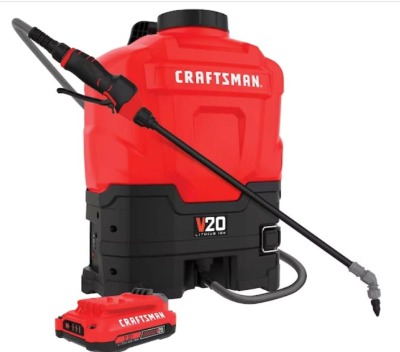
The CRAFTSMAN 20V backpack sprayer leverages the brand’s reputation for reliable tools while providing battery-powered convenience. Integration with the CRAFTSMAN 20V tool ecosystem appeals to existing tool owners seeking battery compatibility.
Brand Heritage and Support
CRAFTSMAN’s established reputation in professional and DIY markets provides confidence in product quality and support. Extensive dealer network ensures parts availability and service access. Brand recognition often translates to better resale value retention.
Comprehensive warranty coverage reflects manufacturer confidence in product reliability. Customer service infrastructure supports troubleshooting and warranty claims efficiently. Brand reputation encourages proper manufacturing quality control.
20V Battery System
CRAFTSMAN 20V lithium-ion battery compatibility provides convenience for existing tool owners. Battery interchangeability across tool platforms maximizes investment value. Standard battery interface ensures long-term compatibility with future tools.
Lithium-ion technology delivers consistent power output throughout discharge cycles. Battery charge indicators provide remaining runtime estimates for operation planning. Quick-charging capability minimizes downtime between applications.
Electric Pump Operation
Battery-powered pump eliminates manual pumping effort while maintaining consistent pressure. Electric operation allows operators to focus on application technique rather than pressure maintenance. Consistent pump performance improves spray quality and reduces operator fatigue.
Pressure regulation maintains optimal spray characteristics regardless of battery charge level. The pump automatically compensates for voltage variations as batteries discharge. Consistent performance ensures uniform application results throughout battery life.
Tank and Construction
Standard 4-gallon polyethylene tank construction provides chemical resistance and durability. Translucent tank walls allow easy liquid level monitoring during operation. Wide opening design simplifies filling and cleaning procedures.
Quality construction materials withstand normal use conditions without premature failure. Tank design balances capacity with manageable weight when full. Proper tank engineering ensures leak-free operation throughout service life.
Comfort Features
Standard shoulder strap design provides adequate comfort for most applications. Adjustable straps accommodate different operator sizes and clothing variations. Basic padding reduces pressure points during extended use sessions.
Weight distribution design balances the tank and battery system for stability. Ergonomic considerations reduce operator fatigue during normal application sessions. Comfortable operation encourages proper spray techniques.
Spray System
Standard spray wand provides adequate reach and control for residential applications. Basic construction meets normal use requirements without premium features. Simple operation suits occasional use scenarios.
Included nozzle options cover basic spray pattern requirements. Standard brass components resist corrosion under normal use conditions. Simple nozzle system allows basic pattern adjustments.
Pros:
- Established CRAFTSMAN brand reputation
- 20V battery system compatibility
- Electric pump convenience
- Reliable customer service support
- Good warranty coverage
Cons:
- Basic feature set compared to specialists
- Limited advanced options
- Average battery life performance
The CRAFTSMAN 20V sprayer appeals to brand-loyal customers and existing 20V tool owners. While lacking advanced features, it provides reliable basic performance backed by established brand support.
Detailed Comparison Analysis
Pressure Output Comparison
The FIELD KING 190328 leads in maximum pressure capability at 150 PSI, making it ideal for applications requiring deep penetration or extended reach. This pressure advantage benefits commercial applications and challenging spray conditions.
The VAXMAY and PetraTools electric models provide 100 PSI and 90 PSI respectively, suitable for most residential and light commercial applications. Battery-powered units typically offer lower pressure to extend battery life, but adequate pressure for common spray tasks.
The Chapin 60114 manual pump delivers competitive pressure through traditional piston design. Manual operation provides unlimited runtime but requires periodic pumping to maintain pressure. The CRAFTSMAN model offers standard battery-powered pressure suitable for basic applications.
Battery Life and Power Systems
The PetraTools HD4000 excels in battery runtime with advertised 6-hour operation capability. Extended runtime reduces interruptions and improves productivity for large-scale applications. Efficient motor design maximizes battery utilization while maintaining performance.
The VAXMAY model provides adequate battery life through Makita 18V compatibility. Runtime depends on battery capacity and age, with 2.6 Ah providing several hours of typical operation. Battery interchangeability with existing Makita tools adds value for compatible users.
Manual models like the FIELD KING and Chapin units offer unlimited runtime without battery constraints. Manual operation suits applications where consistent availability matters more than pumping convenience. No battery costs or replacement concerns affect long-term operating expenses.
Comfort and Ergonomics
The PetraTools HD4000 emphasizes comfort through premium padding and ergonomic design. Extended battery life capability requires superior comfort for long operation sessions. Quality strap materials maintain cushioning properties throughout extended use.
The FIELD KING 190328 provides professional-grade comfort suitable for daily commercial use. Ergonomic design distributes weight effectively while accommodating various operator sizes. Quality construction ensures comfort features maintain effectiveness throughout service life.
Other models offer adequate comfort for typical residential use patterns. Basic padding and strap designs suit occasional use scenarios without premium comfort requirements. Standard ergonomic features accommodate most operators adequately.
Filtration and Maintenance
The Chapin 60114 leads in filtration capability through unique 3-stage design. Superior filtration prevents operational issues and extends component life. Multiple filtration stages accommodate various liquid types and contamination levels.
Standard single-stage filtration in other models provides adequate protection for typical applications. Basic filtration prevents major clogs while requiring more attention to liquid cleanliness. Regular filter maintenance ensures consistent performance.
Electric models benefit from consistent pressure that reduces filtration stress. Manual models may experience pressure variations that affect filtration effectiveness. Proper filtration maintenance ensures optimal performance regardless of pump type.
Value Proposition Analysis
The FIELD KING 190328 provides exceptional value for professional and serious hobbyist users. Premium features and construction justify higher initial cost through extended service life and superior performance. Professional-grade reliability reduces downtime and maintenance costs.
Budget-conscious users may prefer the Chapin 60114 for its domestic manufacturing and superior filtration at moderate cost. Made in USA construction provides quality assurance while 3-stage filtration prevents common operational issues.
Battery-powered models command premium prices but provide operational convenience. Extended battery life in the PetraTools model justifies higher cost for users requiring long operation times. Battery compatibility in VAXMAY and CRAFTSMAN models adds value for existing tool owners.
Buyer’s Guide: Choosing the Right 4 Gallon Backpack Sprayer
Application Requirements Assessment
Residential Lawn and Garden Care
Home gardeners typically require moderate pressure output and comfortable operation for occasional use. Battery-powered models provide convenience for weekend warriors who prefer avoiding manual pumping. Tank capacity of 4 gallons suits most residential properties without excessive weight burden.
Consider spray pattern requirements for different applications. Wide patterns suit fertilizer application across large lawn areas. Narrow patterns provide precision for weed spot-treatment and pest control. Multiple nozzle options expand versatility without requiring multiple sprayer purchases.
Commercial Landscaping Operations
Professional landscapers need reliable equipment that withstands daily use without frequent maintenance. Higher pressure output enables efficient application through dense vegetation and extended reach capabilities. Durability becomes critical for equipment that generates revenue.
Service availability and parts supply affect operational continuity for commercial users. Domestic manufacturing often provides better parts availability and service support. Professional-grade construction reduces downtime and maintenance costs over equipment lifetime.
Agricultural Applications
Farm operations require robust equipment capable of handling various chemicals and extended operation periods. Filtration capability becomes critical when dealing with concentrated solutions and field-mixed chemicals. Chemical compatibility ensures equipment longevity when exposed to harsh agricultural chemicals.
Coverage area requirements may necessitate larger tank capacities or efficient operation to minimize refill frequency. Extended battery life benefits large-scale applications where interruptions reduce productivity. Manual operation eliminates battery constraints for all-day operations.
Power System Selection
Manual Pump Advantages
Manual pumps provide unlimited operation time without battery constraints or power source requirements. Simple mechanical operation reduces potential failure points and simplifies field repairs. Lower initial costs appeal to budget-conscious buyers and occasional users.
Manual operation suits remote locations without convenient charging access. Consistent availability makes manual pumps reliable for critical applications where equipment failure could cause significant problems. No battery replacement costs affect long-term operating expenses.
Battery-Powered Benefits
Electric pumps eliminate manual effort while providing consistent pressure output. Operators maintain focus on application technique rather than pressure maintenance through pumping cycles. Consistent pressure improves spray quality and application uniformity.
Battery technology continues improving runtime and charging convenience. Lithium-ion batteries provide better energy density and longer service life compared to older battery technologies. Quick-charging capabilities reduce downtime between applications.
Comfort and Ergonomic Considerations
Strap Design and Padding
Quality shoulder straps distribute weight evenly across the operator’s shoulders and back. High-density padding maintains cushioning properties even after repeated compression cycles. Adjustable strap lengths accommodate different body types and seasonal clothing variations.
Strap attachment points affect weight distribution and stability during movement. Multiple attachment points spread loads across tank structure, reducing stress concentrations. Quality attachment hardware prevents strap failure under normal operating loads.
Back Panel Design
Contoured back panels follow natural spine curves, improving comfort and reducing pressure points. Ventilation features prevent moisture buildup between tank and operator’s back during extended use. Balanced design minimizes tank shifting during movement across uneven terrain.
Back panel materials affect durability and comfort over time. Quality materials maintain shape and cushioning properties throughout extended service life. Easy cleaning capabilities maintain hygiene when equipment is shared among multiple operators.
Spray System Components
Wand Design and Construction
Spray wand length affects reach capability for overhead applications and hard-to-access areas. Telescopic wands provide adjustability for different operators and application scenarios. Quality construction prevents bending and maintains spray accuracy under normal use conditions.
Grip design influences operator comfort during extended use sessions. Ergonomic grips reduce hand fatigue and improve control accuracy. Durable grip materials withstand chemical exposure and repeated cleaning cycles.
Nozzle Selection and Versatility
Multiple nozzle options expand application versatility without requiring additional equipment purchases. Different spray patterns accommodate various liquid types and coverage requirements. Quick-change systems allow pattern adjustments without tools or complex procedures.
Nozzle quality affects spray accuracy and longevity under chemical exposure. Brass components resist corrosion better than plastic alternatives but cost more initially. Consistent spray patterns ensure uniform application results throughout nozzle service life.
Maintenance and Longevity
Filter System Requirements
Adequate filtration prevents clogs and extends component life through debris removal. Multi-stage filtration provides superior protection but requires more maintenance attention. Filter accessibility affects maintenance convenience and frequency.
Filter replacement costs and availability influence long-term operating expenses. Standard filter sizes reduce replacement costs compared to proprietary designs. Quality filters withstand chemical exposure and repeated cleaning cycles.
Component Accessibility
Easy access to pump components simplifies maintenance and extends service life through proper care. Pump seals and components require periodic replacement in high-use applications. Accessible design reduces maintenance costs and downtime.
Tank design affects cleaning thoroughness and maintenance convenience. Wide openings provide access for thorough cleaning between different chemical applications. Smooth internal surfaces prevent residue buildup and simplify cleaning procedures.
Maintenance Tips and Best Practices
Pre-Operation Preparation
Tank Inspection and Preparation
Inspect tank integrity before each use session, checking for cracks, leaks, or damage that could affect operation safety. Clean tanks thoroughly between different chemical applications to prevent cross-contamination and chemical reactions. Proper tank preparation ensures safe operation and prevents equipment damage.
Check all connections and fittings for tightness and wear. Loose connections reduce pressure efficiency and may cause hazardous leaks. Replace worn seals and gaskets before they fail completely. Preventive maintenance costs less than emergency repairs or safety incidents.
Filter System Maintenance
Clean filters before each use session to ensure optimal flow and pressure. Clogged filters reduce system efficiency and may cause pump damage through excessive strain. Replace filters according to manufacturer recommendations or when cleaning no longer restores proper flow.
Multiple filter stages require individual attention during maintenance procedures. Primary filters typically accumulate more debris and require more frequent cleaning. Secondary filters may need replacement more often than primary filters due to finer filtration requirements.
Operation Best Practices
Proper Mixing Procedures
Follow chemical manufacturer instructions for mixing ratios and procedures. Incorrect mixing ratios reduce treatment effectiveness or may cause equipment damage through chemical reactions. Use graduated tank markings or separate measuring containers for accurate ratio control.
Add chemicals to water rather than water to chemicals to prevent dangerous reactions. Proper mixing sequence reduces splash hazards and ensures uniform solution distribution. Mix thoroughly before operation to prevent concentration variations during application.
Pressure Management
Maintain appropriate pressure for application requirements without exceeding equipment limitations. Excessive pressure wastes chemicals and may damage sensitive plants or surfaces. Insufficient pressure reduces application effectiveness and coverage uniformity.
Monitor pressure gauges throughout application sessions to ensure consistent performance. Pressure variations may indicate pump problems or filter restrictions requiring attention. Address pressure issues immediately to prevent equipment damage or application problems.
Post-Operation Care
Thorough Cleaning Procedures
Clean equipment thoroughly after each use to prevent chemical residue buildup and corrosion. Flush systems with clean water multiple times to remove all chemical traces. Pay special attention to pump components and nozzles where residue accumulation causes operational problems.
Use appropriate cleaning solutions for stubborn residue or chemical buildup. Some chemicals require specific neutralizing agents for safe removal. Follow chemical manufacturer recommendations for equipment cleaning after use.
Storage Preparation
Store equipment in dry, protected locations to prevent weather damage and corrosion. Remove batteries from electric models during extended storage periods. Battery removal prevents damage from battery leakage or discharge during storage.
Lubricate pump components according to manufacturer recommendations before storage. Proper lubrication prevents seal deterioration and ensures smooth operation when equipment returns to service. Store spray wands and nozzles separately to prevent damage during storage.
Troubleshooting Common Issues
Pressure-Related Problems
Low Pressure Output
Check filter conditions first, as clogged filters cause most pressure reduction problems. Clean or replace filters to restore proper flow and pressure. Multiple filter stages require individual attention during troubleshooting procedures.
Inspect pump seals for wear or damage that allows pressure leakage. Worn seals reduce pressure efficiency and require replacement for proper operation. Pump seal replacement may require professional service depending on equipment design complexity.
Pressure Loss During Operation
Monitor tank liquid levels, as low levels reduce pump efficiency and pressure output. Maintain adequate liquid levels throughout application sessions for consistent performance. Plan refill schedules to prevent pressure loss from empty tanks.
Check all connections and fittings for leaks that reduce system pressure. Tighten loose connections and replace damaged fittings immediately. Pressure leaks waste chemicals and reduce application effectiveness while potentially creating safety hazards.
Spray Quality Issues
Uneven Spray Patterns
Clean nozzles thoroughly to remove debris that creates uneven spray patterns. Disassemble nozzles completely for thorough cleaning when simple flushing proves inadequate. Use appropriate cleaning tools to avoid damage to precision nozzle components.
Check for nozzle wear that affects spray quality over time. Replace worn nozzles to restore proper spray patterns and application accuracy. Quality nozzles last longer but eventually require replacement in high-use applications.
Clogged Nozzles
Remove nozzles and clean with appropriate solvents for chemical residue removal. Use soft brushes or compressed air to remove stubborn debris without damaging precision components. Avoid metal tools that could damage nozzle openings and affect spray patterns.
Install inline filters near nozzles to prevent debris from reaching spray components. Additional filtration reduces nozzle clogging frequency and extends component life. Balance filtration effectiveness with maintenance requirements for optimal results.
Battery and Electric System Issues
Short Battery Life
Check battery age and charge cycles, as older batteries lose capacity over time. Replace batteries when capacity drops below acceptable levels for application requirements. Proper charging practices extend battery life and maintain performance.
Inspect battery connections for corrosion or damage that increases resistance and reduces efficiency. Clean connections regularly to maintain optimal electrical contact. Replace damaged connectors to prevent power loss and potential safety hazards.
Electric Pump Problems
Monitor motor operation for unusual sounds or vibrations that indicate internal problems. Address motor issues immediately to prevent complete failure and expensive repairs. Professional service may be required for complex electric pump repairs.
Check wiring connections for damage or corrosion that affects electrical continuity. Repair damaged wiring immediately to prevent safety hazards and restore proper operation. Use appropriate electrical repair procedures and materials for safety and reliability.
Seasonal Use and Storage
Spring Preparation
Equipment Inspection
Conduct thorough equipment inspection before the first seasonal use. Check all components for winter storage damage or deterioration. Replace worn parts before they fail during critical application periods.
Test all systems including pumps, pressure regulation, and spray components. Address any performance issues before equipment is needed for time-sensitive applications. Preventive maintenance prevents problems during busy application seasons.
Battery System Preparation
Charge batteries fully before seasonal use and check charging system operation. Replace batteries that fail to hold proper charge levels. Battery problems during peak season cause significant delays and productivity loss.
Update battery maintenance records to track age and performance trends. Plan battery replacement schedules based on historical performance data. Proactive battery management prevents unexpected failures during critical periods.
Summer Operation
Heat Management
Protect equipment from excessive heat that may damage plastic components or battery systems. Store equipment in shaded areas during breaks to prevent heat buildup. High temperatures accelerate component deterioration and reduce battery life.
Monitor battery temperature during extended use in hot weather. Overheated batteries lose capacity and may suffer permanent damage. Allow cooling periods between intensive use sessions during extremely hot weather.
Increased Maintenance Frequency
Hot weather and frequent use require increased maintenance attention. Clean filters more frequently as dust and debris accumulate faster during dry conditions. Replace worn components promptly to prevent failures during peak use periods.
Monitor fluid levels more closely as evaporation increases during hot weather. Maintain proper fluid levels for optimal pump performance and component protection. Plan maintenance schedules around peak use periods to minimize downtime.
Fall Preparation and Winter Storage
Thorough Cleaning
Clean equipment thoroughly before storage to prevent chemical residue damage during storage periods. Pay special attention to pump components where residue causes corrosion and seal damage. Complete cleaning prevents expensive repairs when equipment returns to service.
Flush all systems with clean water followed by appropriate storage solutions. Some manufacturers recommend specific storage fluids to protect internal components. Follow manufacturer recommendations for optimal storage preparation.
Battery Storage Procedures
Remove batteries from electric equipment and store separately in appropriate conditions. Battery storage requirements vary by chemistry type and manufacturer recommendations. Proper battery storage extends life and maintains performance capability.
Charge batteries to appropriate levels for storage period length. Over-discharged batteries suffer permanent capacity loss during storage. Monitor battery charge levels periodically during extended storage periods.
Component Protection
Apply appropriate lubricants to pump components and moving parts before storage. Proper lubrication prevents corrosion and ensures smooth operation when equipment returns to service. Use recommended lubricants to avoid compatibility problems.
Store equipment in dry, protected locations away from extreme temperature variations. Protect equipment from rodents and pests that may damage components during storage. Proper storage conditions extend equipment life and reduce maintenance requirements.
Cost Analysis and Value Comparison
Initial Purchase Price Considerations
Budget Category Analysis
Entry-level manual sprayers typically cost between $100-200, providing basic functionality for occasional residential use. Mid-range models with enhanced features and construction quality range from $200-400. Premium professional-grade units command $400+ but deliver superior performance and durability.
Battery-powered models generally cost more initially due to electric components and battery systems. Additional battery costs should be considered for backup power or replacement needs. Electric convenience often justifies higher initial investment for frequent users.
Feature Value Assessment
Higher-pressure capabilities justify premium pricing for users requiring superior performance. Professional applications benefit from pressure advantages that improve efficiency and results quality. Occasional users may find standard pressure adequate for basic applications.
Advanced filtration systems prevent operational problems that cost time and money. Superior filtration reduces maintenance requirements and extends component life. The Chapin 60114’s 3-stage filtration system provides exceptional value for users dealing with debris-prone applications.
Comfort features become valuable for extended use applications. Premium padding and ergonomic design reduce operator fatigue and improve productivity. Professional users benefit most from comfort investments through reduced fatigue and improved work quality.
Operating Cost Analysis
Manual vs Electric Operation
Manual pumps require no battery purchases or charging costs throughout their service life. Operating costs remain minimal beyond regular maintenance and occasional part replacement. Fuel-free operation suits remote locations and budget-conscious applications.
Electric models incur battery costs ranging from $50-150 depending on battery type and capacity. Battery replacement every 2-3 years adds ongoing operating expenses. Quick-charging convenience and consistent performance may justify battery costs for frequent users.
Maintenance Cost Variations
Simple manual pumps require basic maintenance with inexpensive replacement parts. Pump seals, filters, and nozzles represent the primary maintenance costs. DIY maintenance capability reduces service costs for mechanically inclined users.
Electric models require additional maintenance for motor and electrical components. Professional service may be necessary for complex electrical problems. Battery maintenance and replacement represent the largest ongoing cost component.
Chemical Compatibility Costs
Quality tank materials resist chemical damage that could require expensive tank replacement. Chemical-resistant components justify premium pricing through extended service life. Cheaper materials may fail prematurely when exposed to aggressive chemicals.
Superior filtration prevents chemical contamination that could damage pump components. Clean chemical delivery reduces pump wear and extends service life. Filtration system quality affects long-term maintenance costs significantly.
Return on Investment Analysis
Professional Use Scenarios
Commercial landscaping operations benefit from equipment reliability that prevents costly downtime. Professional-grade construction pays for itself through consistent availability and reduced maintenance. Customer satisfaction improves with reliable equipment performance.
Time savings from electric operation increase productivity for professional users. Consistent pressure delivery improves application quality and reduces callback visits. Labor cost savings often justify premium equipment pricing for commercial operations.
Residential Use Patterns
Homeowner applications typically involve lower usage frequency with seasonal operation patterns. Premium features provide less value return for occasional use scenarios. Budget-friendly options often meet residential needs adequately.
Extended equipment life provides better value for residential users who maintain equipment properly. Quality construction ensures reliable performance over many seasons. Initial cost savings from budget models may be offset by shorter service life.
Long-Term Value Retention
Premium brands and quality construction retain value better during resale or trade-in situations. Professional-grade equipment maintains functionality longer, extending useful life. Quality reputation supports higher resale values in used equipment markets.
Domestic manufacturing often provides better parts availability and service support over equipment lifetime. Made in USA construction typically indicates higher quality standards and better customer service. Long-term support availability affects equipment value retention.
Safety Considerations and Best Practices
Chemical Handling Safety
Personal Protective Equipment
Always wear appropriate protective equipment including gloves, eye protection, and respiratory protection when handling chemicals. Chemical-resistant gloves prevent skin contact with potentially harmful substances. Safety glasses protect eyes from chemical splashes during mixing and application.
Long-sleeved shirts and pants provide additional skin protection during application activities. Chemical-resistant materials perform better than cotton or other natural fibers. Change contaminated clothing immediately to prevent prolonged chemical exposure.
Proper Mixing Procedures
Read chemical labels completely before mixing or application activities. Follow manufacturer instructions precisely for safety and effectiveness. Never mix different chemicals unless specifically approved by manufacturers.
Mix chemicals in well-ventilated areas away from ignition sources and people. Add chemicals to water rather than water to chemicals to prevent dangerous reactions. Use appropriate measuring tools to ensure accurate mixing ratios.
Application Safety Protocols
Check weather conditions before application to ensure appropriate wind and temperature conditions. Avoid application during windy conditions that could cause drift to unintended areas. Temperature extremes may affect chemical effectiveness and safety.
Maintain appropriate buffer zones around sensitive areas including water sources, food crops, and occupied buildings. Post warning signs in treated areas when required by chemical labels. Prevent people and pets from entering treated areas until safe re-entry periods pass.
Equipment Safety
Pressure System Precautions
Never exceed maximum pressure ratings specified by equipment manufacturers. Excessive pressure may cause equipment failure and potential injury. Monitor pressure gauges throughout operation to maintain safe operating levels.
Inspect pressure-bearing components regularly for signs of wear or damage. Replace worn components before they fail under pressure. Sudden pressure release from failed components poses serious injury risks.
Electrical Safety for Battery Models
Use only manufacturer-approved batteries and charging equipment. Incompatible batteries may cause fires or equipment damage. Charge batteries according to manufacturer instructions in appropriate locations.
Inspect electrical connections regularly for damage or corrosion. Repair electrical problems immediately to prevent safety hazards. Keep electrical components dry and protected from chemical exposure.
Storage and Transportation Safety
Chemical Storage Requirements
Store chemicals in original containers with intact labels. Never transfer chemicals to unlabeled containers that could cause identification problems. Keep chemicals away from children, pets, and food storage areas.
Maintain appropriate storage temperatures to prevent chemical degradation or dangerous reactions. Some chemicals require climate-controlled storage for safety and effectiveness. Follow label instructions for specific storage requirements.
Equipment Transportation
Secure equipment properly during transportation to prevent shifting that could cause damage or spills. Empty tanks before transport when practical to reduce weight and spill risks. Separate chemical storage from passenger compartments during transport.
Clean equipment thoroughly before transport to prevent chemical exposure during handling. Residual chemicals may pose health risks during loading and unloading activities. Proper cleaning also prevents cross-contamination between applications.
Environmental Impact and Sustainability
Chemical Application Responsibility
Drift Prevention and Control
Use appropriate nozzles and pressure settings to minimize chemical drift beyond target areas. Fine droplets travel farther than larger droplets in wind conditions. Adjust spray patterns based on wind conditions and target requirements.
Apply chemicals during optimal weather conditions to reduce environmental impact. Calm wind conditions prevent drift to sensitive areas. Appropriate humidity levels improve application effectiveness while reducing waste.
Water Source Protection
Maintain appropriate buffer distances from water sources including wells, streams, and ponds. Chemical contamination of water sources poses serious environmental and health risks. Follow local regulations and chemical label requirements for water protection.
Prevent equipment cleaning activities near water sources that could introduce chemicals. Rinse water containing chemical residues requires proper disposal. Use designated wash areas with appropriate drainage when available.
Equipment Longevity and Waste Reduction
Preventive Maintenance Benefits
Proper maintenance extends equipment life and reduces waste through premature replacement. Regular cleaning prevents chemical buildup that causes component failure. Filter maintenance prevents pump damage that could require complete replacement.
Quality equipment construction reduces replacement frequency and associated waste. Premium materials resist chemical damage and wear better than budget alternatives. Initial investment in quality equipment pays environmental dividends through extended service life.
Battery Recycling Considerations
Dispose of batteries properly through approved recycling programs. Lithium-ion batteries contain materials that require specialized recycling processes. Improper battery disposal poses environmental risks through chemical contamination.
Choose battery systems with established recycling infrastructure for responsible disposal. Major tool manufacturers often provide battery recycling programs. Proper battery management reduces environmental impact throughout equipment life.
Sustainable Application Practices
Integrated Pest Management
Use sprayer equipment as part of comprehensive pest management strategies rather than sole reliance on chemical treatments. Targeted application reduces chemical usage while maintaining effectiveness. Proper timing improves treatment success while minimizing environmental impact.
Monitor treatment effectiveness to optimize application rates and frequencies. Excessive application wastes chemicals and increases environmental exposure. Accurate record keeping helps optimize future treatments.
Organic and Reduced-Risk Options
Modern sprayer equipment accommodates organic and reduced-risk treatment options effectively. Quality spray systems deliver consistent application regardless of chemical type. Proper equipment maintenance ensures compatibility with various treatment options.
Consider treatment alternatives that reduce environmental impact while meeting application requirements. Biological controls and organic treatments often work effectively with proper application equipment. Equipment versatility supports sustainable treatment strategies.
Technology Trends and Future Developments
Smart Sprayer Technology
GPS and Application Mapping
Advanced sprayer systems increasingly incorporate GPS technology for precise application mapping and record keeping. Digital mapping prevents over-application through accurate coverage tracking. Treatment records support regulatory compliance and optimize future applications.
Smartphone integration allows remote monitoring and control of spray operations. Real-time data collection improves application accuracy and efficiency. Digital records eliminate paper-based systems while improving data accuracy.
Automated Pressure Control
Sensor-based pressure control maintains optimal spray characteristics automatically. Consistent pressure improves application quality while reducing operator workload. Advanced control systems compensate for variables including liquid level and battery condition.
Flow rate monitoring ensures consistent chemical delivery throughout application sessions. Automatic flow control prevents over-application while maintaining coverage uniformity. Precision control reduces chemical waste and environmental impact.
Battery Technology Advances
Improved Energy Density
Next-generation battery technology provides longer runtime in smaller, lighter packages. Improved energy density reduces equipment weight while extending operation time. Advanced battery chemistry offers better performance in temperature extremes.
Fast-charging capabilities reduce downtime between applications. Quick-charge technology allows productive use of short charging periods. Battery management systems optimize charging for extended battery life.
Interchangeable Power Systems
Universal battery platforms allow power sharing across multiple tool types. Standardized battery interfaces reduce inventory requirements and costs. Platform compatibility provides flexibility for users with diverse equipment needs.
Modular power systems allow capacity adjustment based on application requirements. Smaller batteries reduce weight for light-duty applications. Larger battery packs extend runtime for demanding commercial use.
Spray System Innovations
Variable Rate Application
Advanced nozzle systems allow real-time spray rate adjustment based on application needs. Variable rate technology optimizes chemical usage while maintaining effectiveness. Precision application reduces waste and environmental impact.
Sensor-based application control responds to vegetation density and treatment requirements automatically. Smart systems reduce operator workload while improving application accuracy. Automated controls ensure consistent treatment quality.
Improved Filtration Technology
Self-cleaning filter systems reduce maintenance requirements while maintaining performance. Advanced filtration removes smaller particles that could affect spray quality. Improved filter media lasts longer while providing better protection.
Multiple filter stages optimize debris removal without restricting flow excessively. Balanced filtration maintains system efficiency while preventing component damage. Smart filter monitoring alerts operators when maintenance is required.
Conclusion and Final Recommendations
The backpack sprayer market offers diverse solutions for various application requirements and user preferences. Each of the five reviewed models brings distinct advantages to different use scenarios, making selection dependent on specific needs and priorities.
The FIELD KING 190328 stands out for users prioritizing maximum performance and reliability. The 150 PSI pressure capability and leak-proof internal pump design justify premium pricing for professional applications and serious hobbyists. Superior construction quality ensures long-term value through extended service life.
For users seeking electric convenience with excellent battery life, the PetraTools HD4000 provides exceptional value through 6-hour runtime capability. The extended operation time addresses the primary limitation of battery-powered sprayers while maintaining consistent performance throughout discharge cycles.
The VAXMAY battery sprayer appeals to existing Makita tool owners through battery compatibility and telescopic wand convenience. Tool ecosystem integration provides value for users with established battery inventories. The included battery and charger provide complete operation capability.
Budget-conscious users benefit from the Chapin 60114’s domestic manufacturing and superior 3-stage filtration system. Made in USA construction ensures quality while advanced filtration prevents common operational problems. The manual pump provides unlimited runtime without battery constraints.
Brand-loyal customers and existing CRAFTSMAN 20V tool owners find value in the familiar brand backing and established service network. While lacking advanced features, the unit provides reliable basic performance with comprehensive warranty support.
Selection should prioritize application requirements over features lists. Professional users benefit from premium construction and advanced features that improve productivity and reliability. Residential users may find basic functionality adequate for occasional use patterns.
Consider long-term costs including maintenance, parts, and battery replacement when evaluating options. Premium equipment often provides better value through extended service life and lower maintenance requirements. Factor operating costs into purchase decisions for accurate value assessment.
Electric convenience comes at the cost of battery management and replacement expenses. Users with frequent application needs benefit most from electric operation advantages. Occasional users may prefer manual operation simplicity and unlimited runtime capability.
Quality filtration prevents operational problems that cost time and productivity. Superior filtration systems justify premium pricing through reduced maintenance and improved reliability. Applications involving debris-prone liquids benefit significantly from advanced filtration capabilities.
Comfort features become valuable for extended use applications where operator fatigue affects productivity and safety. Professional users and those with large properties benefit from ergonomic design and quality padding. Occasional users may find basic comfort adequate.
The backpack sprayer remains an essential tool for efficient liquid application across residential and commercial markets. Proper selection based on application requirements ensures productive service and user satisfaction. Quality equipment provides reliable performance while supporting safe and effective treatment programs.

